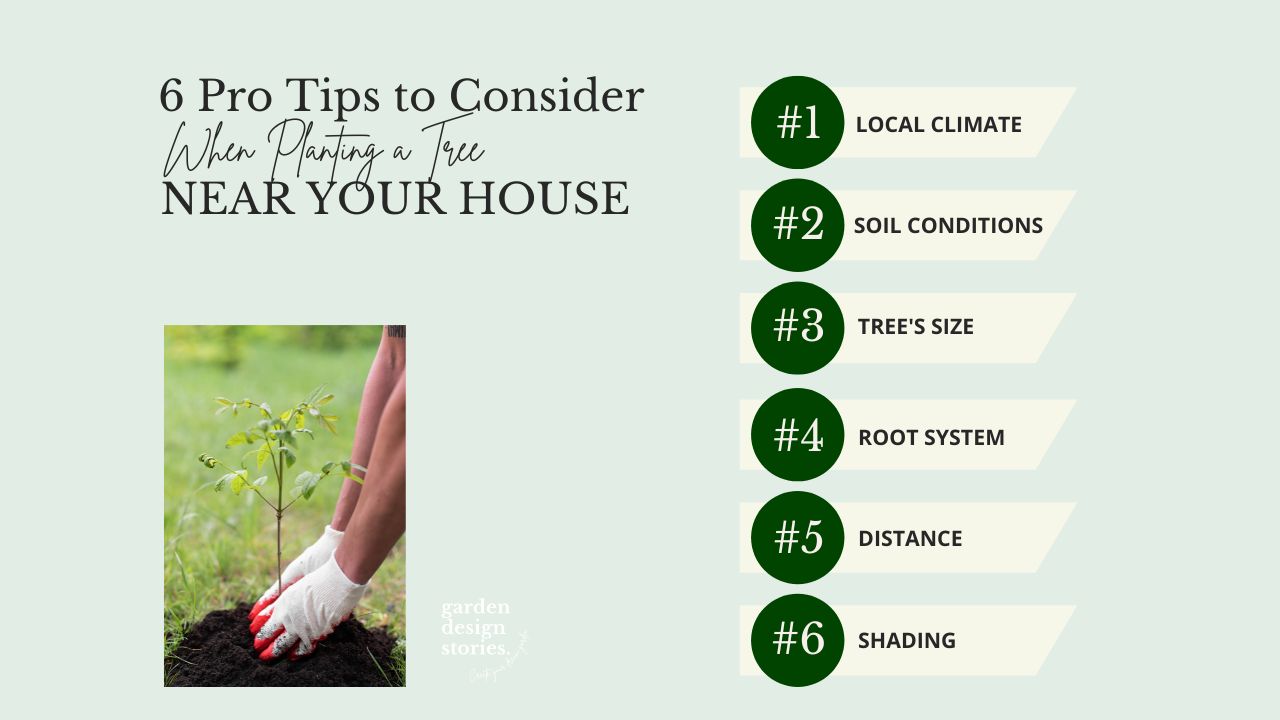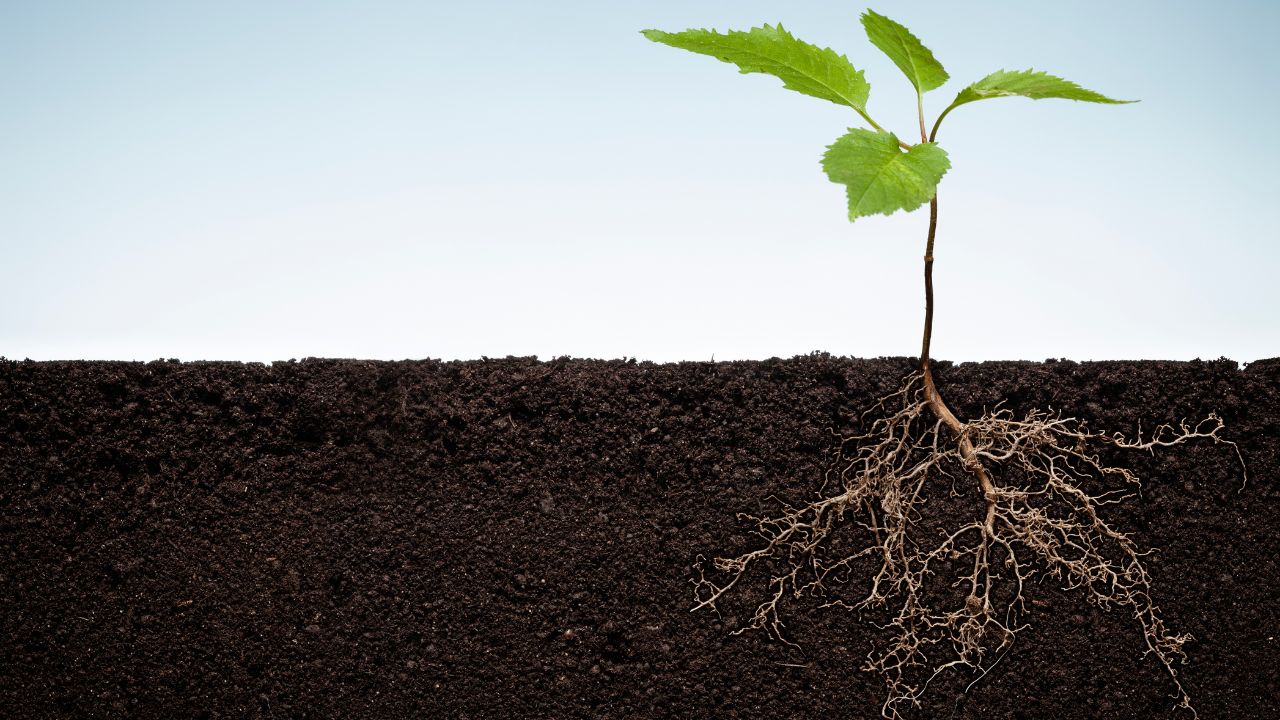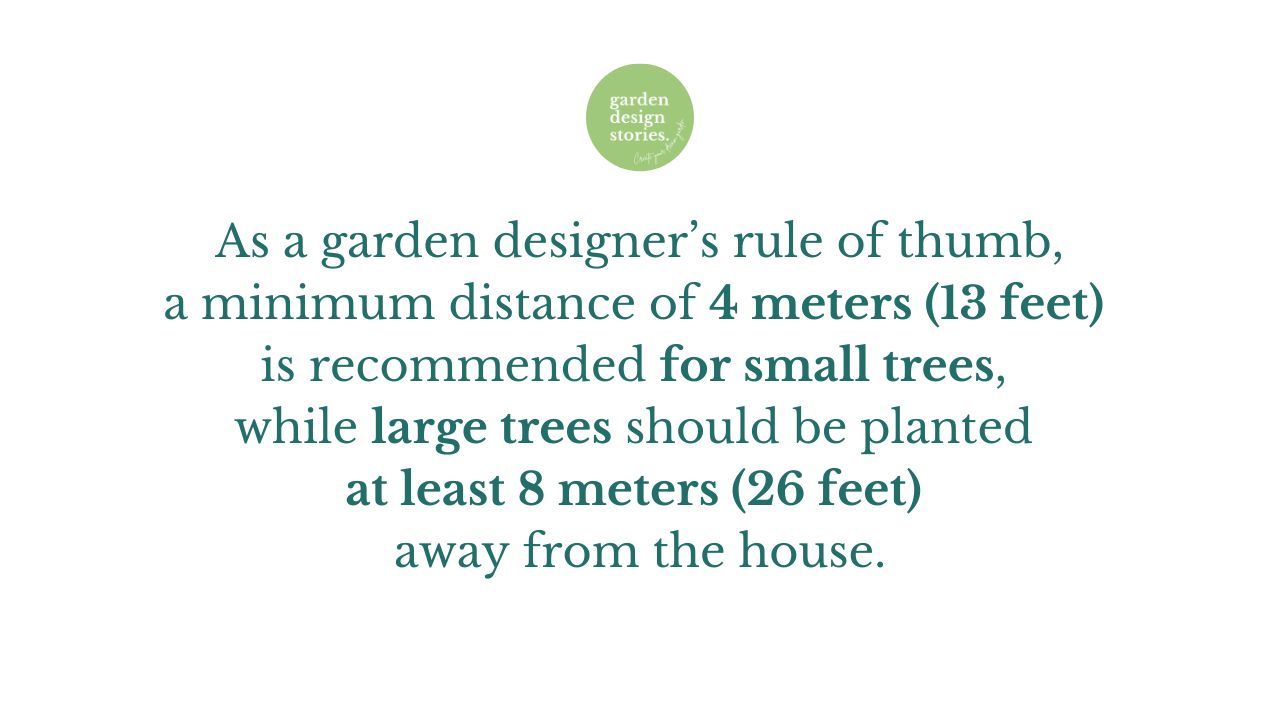6 Pro Tips To Consider When Planting a Tree Near Your House

Trees are a serious issue, so to speak. I don’t take placing a tree light-heartedly as it takes trees many years, often decades, to mature and grow into their typical habit. A wrongly placed tree will never reach that maturity.
I have looked for perfect placements for trees in numerous backyards and landscapes during my days as a professional landscape and garden designer since 2004. I strongly believe that trees are the crown of the yard that is enjoyed by both the homeowners and the surrounding neighborhood.
As you know, planting trees has many benefits, like providing shade and improving the overall look of your outdoor living area. However, there are some essential aspects to consider for successfully incorporating trees close to your patio and especially your house.
- Local climate
- Soil conditions
- Tree’s mature size
- Root system
- Distance from the house
- Shading
By following the next steps, you can ensure optimal growth, longevity and prevent potential issues that may arise from improper tree placement.


Choosing Well-Adapted Tree Species for Your Garden
You can start by choosing tree species suited to your local climate and soil conditions. It's essential to select species that are well-adapted to your local environment to ensure the success of your tree in the long run.
Consider the following tips:
#1 Study your local climate: Identify your area’s hardiness zone and average temperatures. Focus on tree species that thrive in your specific climate, considering heat tolerance, drought resistance, and cold hardiness.
#2 Check your soil conditions: Assess the soil type and drainage in your backyard. Some tree species prefer well-drained soil, while others tolerate a wider range of conditions. Understanding your soil's characteristics will help you choose trees best suited for your particular soil conditions.
Considering Size and Growth Characteristics
Don’t be lured by the plant's compact size at the garden center. Understanding the size and growth characteristics of the tree you plant is crucial for preventing overcrowding and potential conflicts with nearby structures.
Here's what to keep in mind:
#3 Research the tree’s mature height and spread: The tree will grow, and it’s wise to research the maximum height and spread of your chosen tree species at maturity. This information will guide you in selecting a tree that won't outgrow the available space or interfere with nearby structures such as fences, buildings, or utility lines.
#4 Choose a tree with a non-invasive root system: Trees have their secret lives, and there is so much happening underground that we can’t see! Different tree species have varying root systems, some of which can potentially cause damage to structures or invade underground utilities. Be aware of potential conflicts and select a tree with a non-invasive root system for planting near your house or other structures.

Maintaining a Proper Distance from Your House
Lastly, maintaining a proper distance between a tree and your house is crucial to prevent potential issues.
Here's why it's important:
#5 Avoid root damage: Tree roots can extend far beyond the canopy, potentially causing damage to foundations, underground pipes, and other structures. Plant trees at a safe distance from your house, considering the mature spread of the tree's root system. As a garden designer’s rule of thumb, a minimum distance of 4 meters (13 feet) is recommended for small trees, while large trees should be planted at least 8 meters (26 feet) away from the house.

#6 Prevent excessive shading: While trees provide valuable shade, as I wrote in a previous blog post, excessive shading can impact the amount of natural light reaching your house and outdoor living area. Consider the orientation of your home and the sun's path to ensure that the tree's shade does not hinder natural light and warmth during the colder months.
Time to Take Action
With all this knowledge of tree planting tips and guidelines, it's time to put your plans into action and maximize the benefits of your outdoor living space!
Take the first step by researching tree species that thrive in your local climate and soil conditions. Consider the growth characteristics and choose trees that won't outgrow the space or cause issues in the future. Remember to maintain the recommended distance from your house to ensure a healthy and safe environment. By taking these proactive steps, you'll design and create a sustainable and thriving garden that you can enjoy for years to come.
- Remember, your dream garden starts with a vision and a plan.
- Take the ideas and insights from this series and turn them into reality: Part 1: Optimize Your Patio Comfort: Plant Trees to Beat the Heat & Part 2: Plant a Tree to Enhance Your Backyard's Appeal
Each step brings you closer to designing the outdoor oasis you've always dreamed of. Happy gardening, and may your journey be filled with inspiration, creativity, and the joy of seeing your dream garden come to life!

PS. Late summer - early fall is an excellent time to plant deciduous broad-leaf trees, except for the fruit trees I suggest planting in spring.
You might also like to read the following posts:
Plant a Tree to Enhance Your Backyard's Appeal
Optimize Your Patio Comfort: Plant Trees to Beat the Heat
Want to Discover Your Garden Style?
Take my popular Garden Style Quiz to find out which outdoor aesthetic suits you best—and get tailored ideas for building a garden you love.


